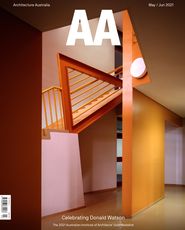In architecture as in many professions, we glamorise, celebrate and expect an attitude of unwavering self-confidence in our practitioners. This type of bold, assertive character is an inherent part of the paradigm of ‘success’ as we have learned to perceive it; a stereotypically white, male, middle-class character who need never experience self-doubt.
— Philip Watson1
Do you suffer from impostor syndrome? Do you worry that others are more talented, diligent, stylish, well-connected or business -savvy than you? Do you struggle to attract Instagram followers? Does office work – erm, studio culture – wear you down? Is the Climate Crisis eroding your faith in architecture? Are you quietly less-than-convinced that designing beautiful, timeless buildings for an elite few is a worthwhile pursuit?
If you answered yes to any of these questions, congratulations! As a misfitting student, graduate or fully-fledged architect, you might still have time to avoid your own obsolescence. You see, the architectural profession as we know it is perched on a precipice, and no amount of commissions, awards, competition wins, comments or likes can bring it back from the edge. As it turns out, while the quietly confident perfectionists amongst us were busy refining the perfect concrete corner rebate detail, the natural systems we rely upon for such everyday tasks as respiration and digestion were rapidly falling apart. Unfortunately, there’s not much sense in creating a seamless transition between interior and exterior if the exterior is, you know, no longer really habitable.
How did you and I get here? Thinking back, we didn’t choose to study architecture because we wanted to spend each day desperately defending someone else’s design vision against a relentless onslaught of building standards, conventions and codes. We were drawn to the spectacle that is the constructed world, a social stage -set that expresses possibilities and shapes destinies. We found the archaic, vernacular and commonplace every bit as inspiring as any Guggenheim or Serpentine. But somewhere along the way, we encountered a series of unfortunate role models, from our undergraduate tutors to lauded Pritzker Prize laureates. Our interests and attitudes were moulded to fit the narrow protocols of the cult of contemporary architecture. Perhaps it’s time for an intervention?
According to Rory Hyde, Architects After Architecture began life as a commission from the Royal Institute of British Architects (RIBA) to write a sort-of handbook or finishing guide for graduating architecture students. However, editors Harriet Harriss, architect and dean of the Pratt School of Architecture in New York; Roberta Marcaccio, teaching at the Architectural Association in London; and Hyde, newly appointed associate professor of architecture at the University of Melbourne, soon realized that this assignment was less than straightforward. How could one little book meaningfully undo years of misspent education and realign the practice with contemporary realities?
Taking a lateral approach to their task, the editors compiled a long list of interesting people whose working lives expand the definition of what constitutes a career in architecture. They decided that this list could be organized into two categories: those broadening the traditional practice of architecture (“Plus”) and those using their architectural training to engage in other fields (“Beyond”). In order to squeeze together many diverse actors and accounts, the book would consist of a grab-bag series of essays, interviews and case studies. RIBA said no to this altered proposal, but – thankfully – Routledge said yes. The result might be considered an unofficial sequel to Hyde’s 2012 book Future Practice: Conversations from the Edge of Architecture. Also published by Routledge and widely influential, Future Practice features a series of interviews conducted by Hyde with an assortment of architectural outliers and renegades.
Future Practice is a small, thick book with a pale yellow skyline and a fluttering white flag on its cover. Architects After Architecture is about twice the size and half the width. Its black and white cover, all-caps titles and greyscale images might make its contents appear rather serious. But don’t be dissuaded. While the quality of writing and insights can be uneven, the overall tone of the book is unpretentious and conversational, with little use of academic jargon or archispeak. A double-page spread in the first few pages presents the list of contributors’ names in the graphic format of a music festival poster. And just like at a festival, where you can hone in on an enticing synth riff or pulsating beat from afar, those with an interest in contemporary design thinking will enjoy the chance to wander around this extended architectural scene and decide who they vibe with. The reader is not expected to diligently parse every line of text from cover to cover. Instead, my advice is to start reading and see what grabs you. Skim over the parts that don’t resonate. Choose your own architectural adventure.
Apparently written in just a single day, Jeremy Till’s short essay “Architecture After Architecture” is the first of the contributors’ texts and one of the book’s highlights. A highly regarded architect, educator and critic, Till succinctly addresses the disconnect between the architecture profession’s internal measures of success and its broader societal and ecological shortcomings. “If architecture is so firmly identified with images of progress and growth,” writes Till, “what happens when those conditions are no longer tolerable? And what happens to the identity of the architect when the continuing production of buildings is questioned?” Till’s essay alone is worth the book’s cover price and in an ideal world would be adopted as the doctrine by which all new architectural graduates are sworn in.
Other standout contributions include an interview with Jane Hall of multidisciplinary UK practice Assemble, who describes the working arrangements and strategic advantages of operating a multidisciplinary collective, and an essay by Architecture Lobby founder Peggy Deamer, who makes a persuasive case for why architects should voluntarily relinquish their status as learned professionals. Chris Hildrey explains how, when it comes to helping the homeless, providing a virtual address can be more important than designing a physical location, while Finn Williams and Robert Mull describe why they each established platforms that catapult young designers out of private practice and into the frontline realities of, respectively, local councils and refugee camps.
While the book never offers a definition of what constitutes a conventional architectural career, a critique of standard practice is implicit in each contributor’s story. Despite this, Architects After Architecture is not a beat-down but a glow-up, its tone generally optimistic. Far from questioning the value of an architectural education, the book affirms the ongoing relevance of architectural thinking across many facets of human enterprise and calls for such thinking to be applied more effectively, habitually and broadly. Andrés Jaque, founder of the Office for Political Innovation, contends that a reformulation of architecture’s agency “is taking place within academia,” while cryptocurrency designer Matt Storus describes the waves of “architecture refugees” who are fleeing everyday practice for more impactful work in areas such as product design.
Some of these assertions invite scepticism. Perusing the book, you may often find yourself wondering: How exactly does one get paid to produce alternative architecture? Must one follow the example of the editors and a number of their contributors, who hold prestigious teaching positions and engage in architectural practice as something of a side hustle? While offering compelling alternatives to office life, the examples collected in the book rarely touch on the mechanics of employment, wages and living expenses. One might well wonder whether this omission is evidence of an underlying and unspoken privilege common to many contributors. All in all, the practicalities of some of the alternative career paths presented in this book warrant further scrutiny.
“We set out to make this book for people finishing their degree and entering the so-called ‘real world,’ who might be thinking ‘this is not for me,’” write the editors, “by providing a sort of menu of alternatives to conventional practice.” Architects After Architecture is not solely intended for graduating students, nor is it exactly targeted at practising architects. Anyone dissatisfied with the limitations of architectural practice and who wants to do more impactful and meaningful work will find this book to be a valuable resource.
The book’s strength is its plurality, presenting architectural practice as a spectrum of possible careers and outcomes ranging from bespoke buildings to public policy. An underlying meta-theme is the power of consultation, deviating from the Modernistic tendency to abstract and distance architecture’s intended users. Rather than striving for the most control possible over details and materials, the heroes of alternative architecture have climbed up the chain to where civic, economic and political decisions are made, even if it means sacrificing tangible built outcomes for more diffuse and distributed gains.
Hearing each contributor’s story is a way of identifying a possible path forward, like a type of echolocation for those of us stumbling around in the dim caverns of our early careers. I doubt that these stories will help to shunt the marginal into the mainstream, shifting the Genslers and the Fosters toward more socially and ecologically responsible practices. But the journeys and destinations will resonate with the dissenters and dropouts amongst us and reassure us that other futures are possible, with other paradigms of success. It is books like these that sustain the deeply repressed, non-conforming aspects of our personalities – those misfit traits that resist the abstract and illusionary safety of architectural object-worship.
1. Philip Watson, “Entitlement syndrome is dragging architecture down,” Architects’ Journal, 19 January 2021, architectsjournal.co.uk/news/opinion/entitlement-syndrome-is-dragging-architecture-down (accessed 26 February 2021).
Source

Discussion
Published online: 10 Aug 2021
Words:
David Neustein
Issue
Architecture Australia, May 2021
















